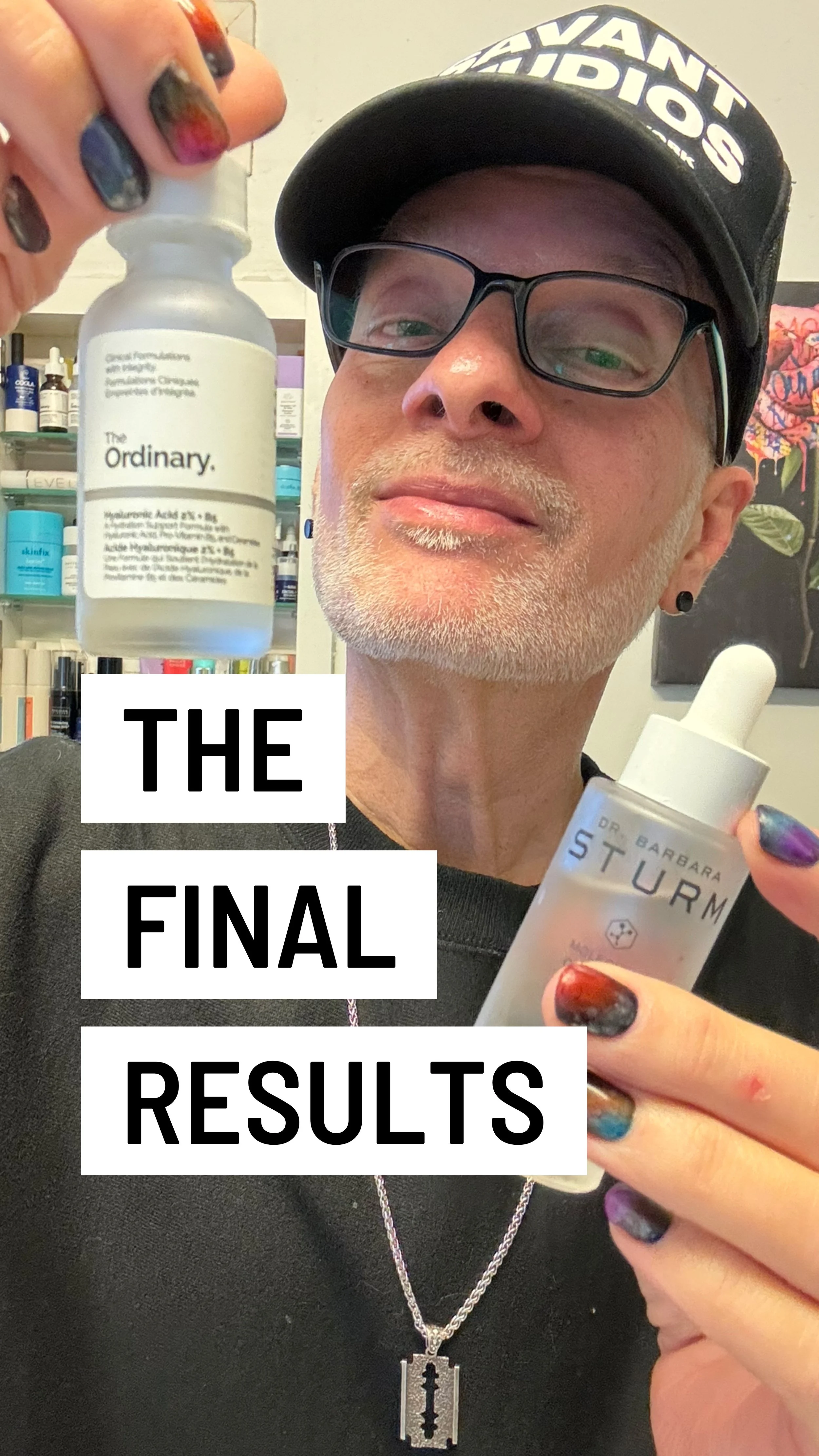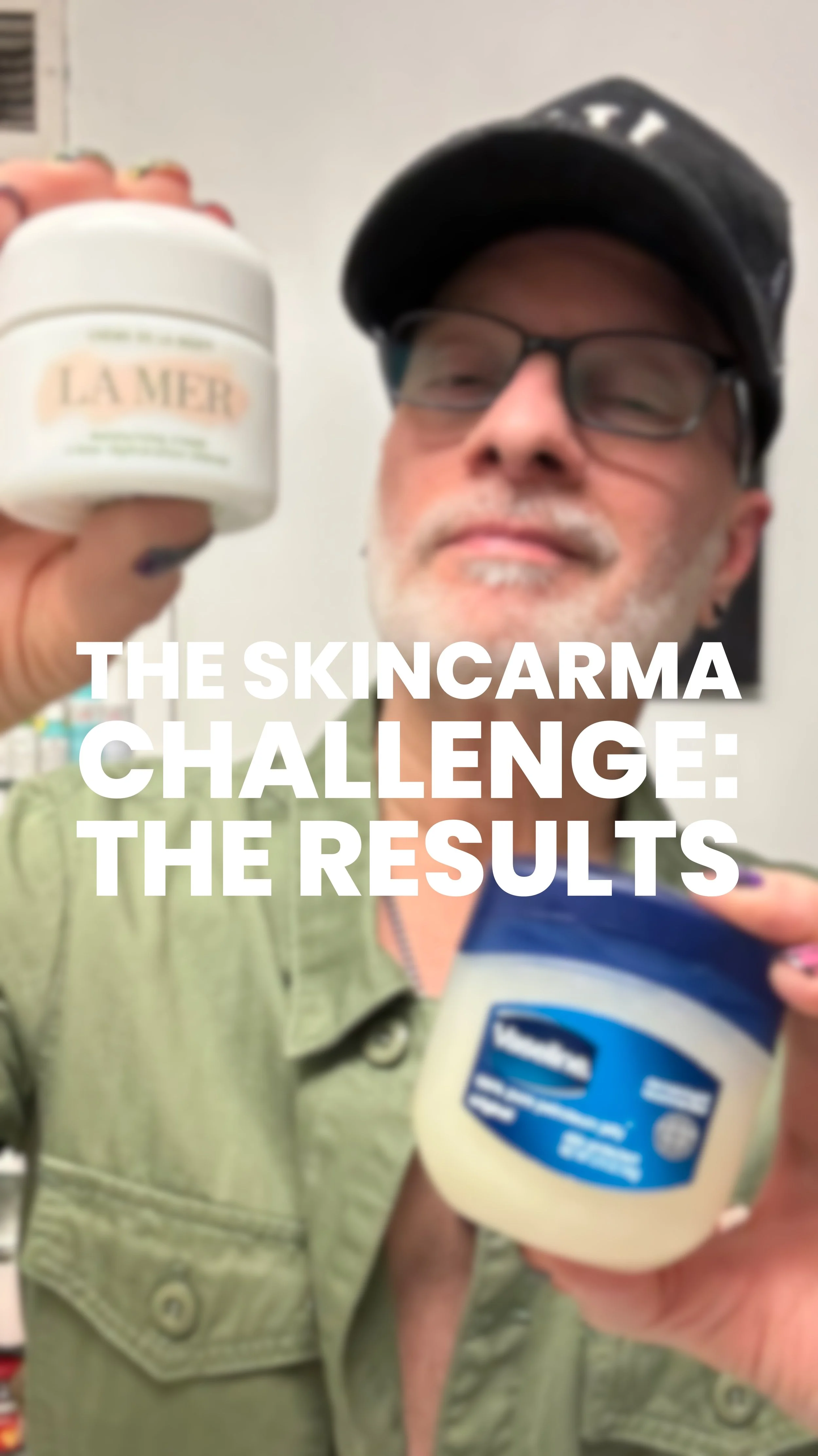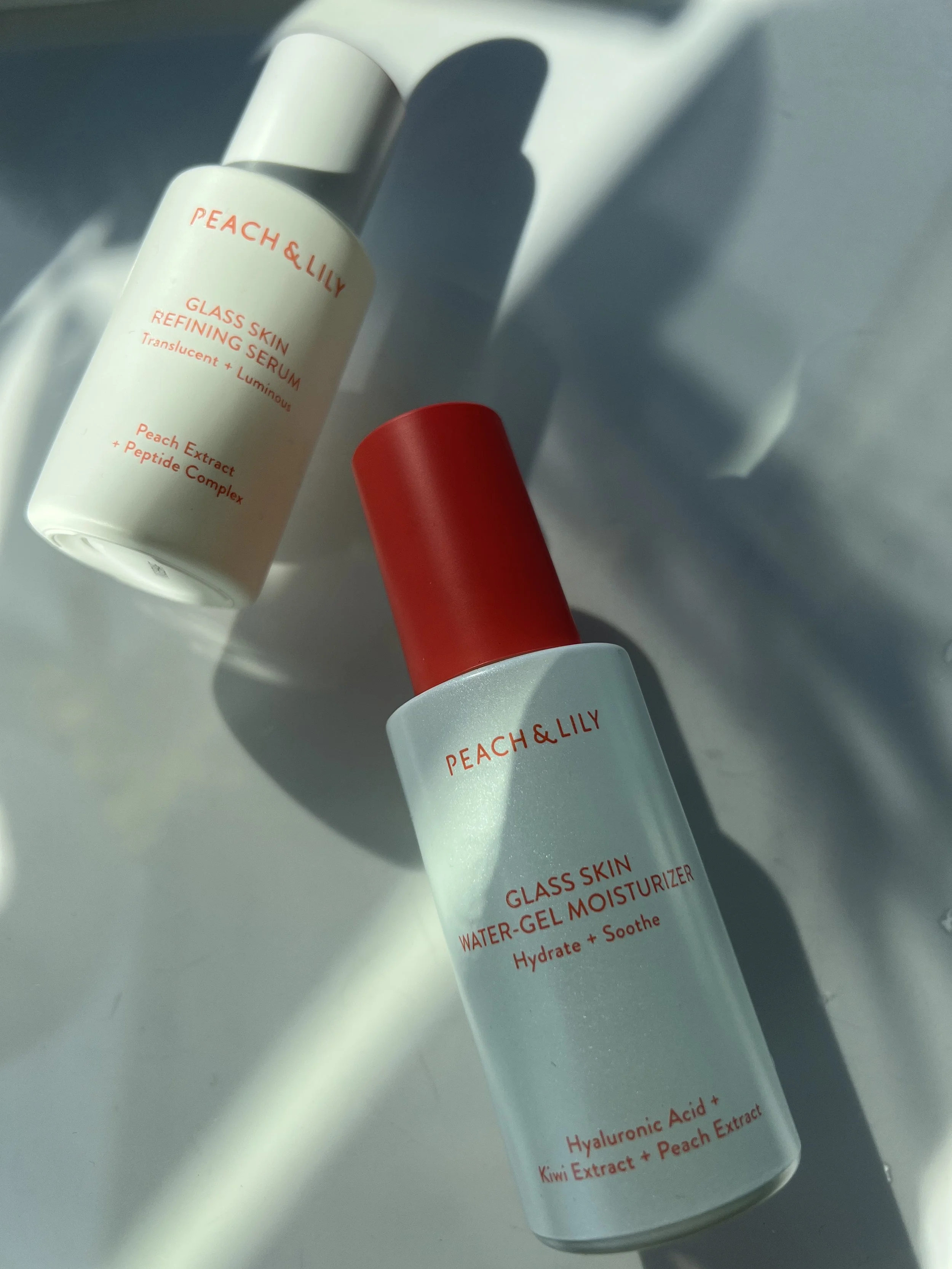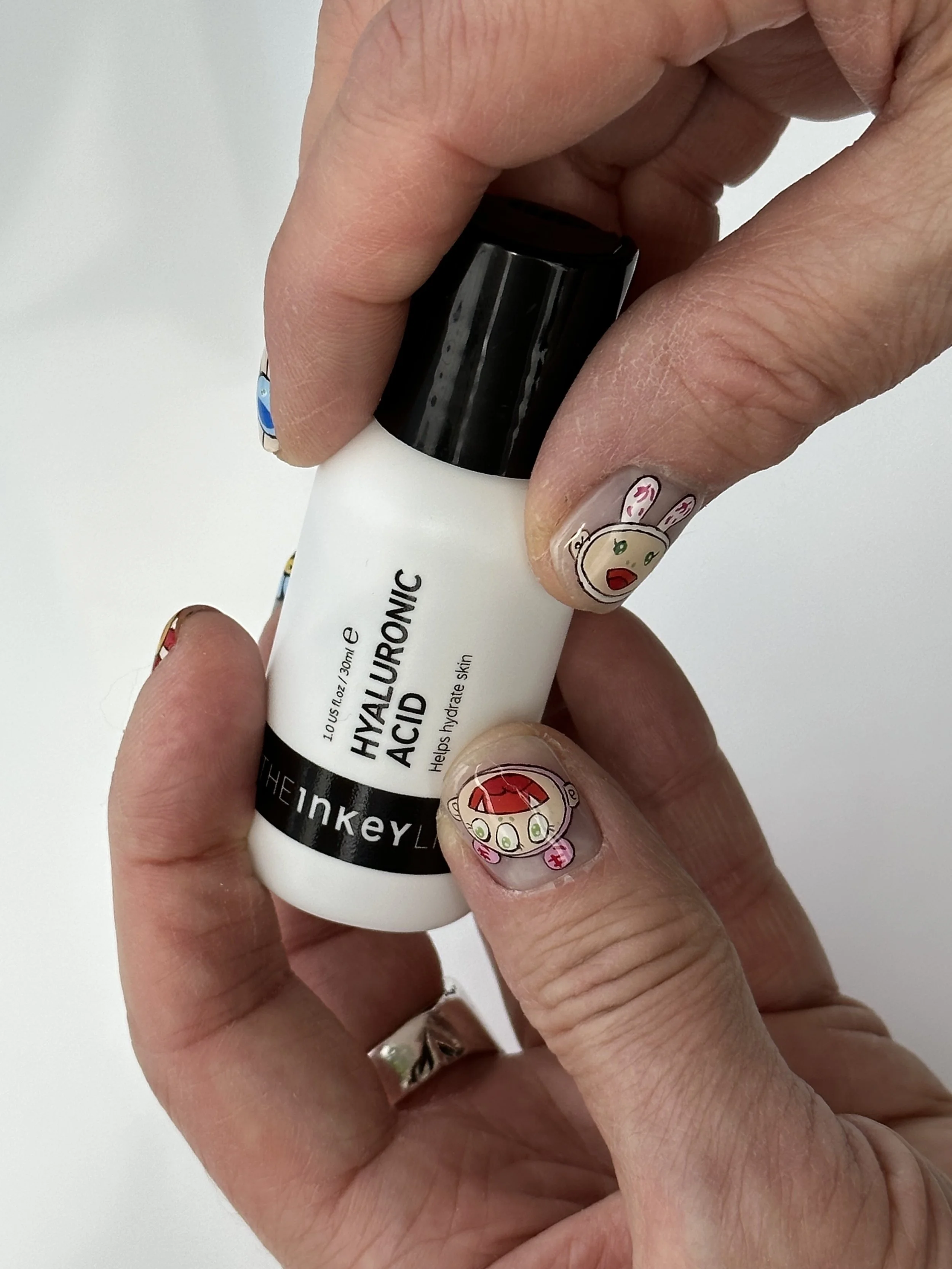PRODUCT REVIEW: THE ORDINARY SACCHAROMYCES FERMENT 30% MILKY TONER - What is Saccharomyces Ferment? Is it OK to exfoliate your face daily? What is the best exfoliator for sensitive skin?
THE ORDINARY SACCHAROMYCES FERMENT 30% MILKY TONER
Exfoliation is a touchy subject with me. I have no doubt that most people are either exfoliating too much or not at all. They’re over-doing it or under-doing it.
It’s the happy medium between the two that optimizes your skin health.
And I think one of the biggest mistakes even the most serious skincare enthusiasts make is to go overboard with exfoliating toners.
It’s especially problematic with acid toners formulated with higher concentrations of alpha hydroxy acids like Glycolic Acid.
Using them every day is not beneficial to your skin health. In fact, it’s detrimental. Your skin just doesn’t need your help exfoliating itself each and every day. Exfoliation is one of the things skin does rather efficiently on its own. I have a perfectly clear, even and bright complexion most of the time. And I don’t seriously exfoliate more than twice per week.
Hey, I’m a big fan, too, of the most popular Glycolic Acid exfoliating toner on Earth – The Ordinary’s Glycolic Acid 7% Exfoliating Toner. I just don’t use it on my face! If you’ve followed my blog, you know where I use it! (If you don’t know, find out here.)
So while I’m a fan of The Ordinary’s iconic exfoliating toner, I’m not a fan of it for its intended use. In fact, I can count on one hand how many times I’ve actually applied Glycolic Acid 7% Exfoliating Toner to my face.
A lot of products from The Ordinary are part of my skincare routines. So I was super excited to be among the first to try The Ordinary Saccharomyces Ferment 30% Milky Toner. The brand’s new, gentle, barely exfoliating daily toner is mild, hydrating and, yes, quite milky. My detailed review is just below.
THE BEST PRODUCTS FROM THE ORDINARY
I know I threw more than a few exfoliation bombs above. So before I break down The Ordinary’s new Saccharomyces Ferment 30% Milky Toner, I wanted to share what I know about skin’s process of exfoliation and why it’s so important to strike a healthy balance.
What is exfoliation and do you really need to exfoliate your face?
Simply put, exfoliation is the process of removing dead surface skin cells from the outermost layer of the skin, the stratum corneum. It is a feature of the body’s natural process of desquamation, or cell renewal. Through desquamation, skin naturally sheds dead cells every 28-30 days, whether you use an exfoliant or not.
While desquamation is a continuous and highly efficient process, you can speed up the removal of dead skin through exfoliating products like acid toners, creams and masks which can help dissolve the bonds that dead skin cells have to the stratum corneum.
The trick is to do that in moderation. Using a Glycolic Acid toner is an excellent option once or twice a week, but using one every day has minimal benefit. You simply don’t have that much dead skin to remove daily. What happens instead is you run the very real risk of irritating and sensitizing your skin.
If you’re going to do it, use an exfoliating acid toner every few days. Twice a week is a good rule. And never, ever exfoliate with a physical scrub. Please.
IT’S GENTLE, BUT EFFECTIVE. SEE IT IN ACTION FOR YOURSELF!
Before I get into my detailed The Ordinary Saccharomyces Ferment 30% Milky Toner product review just below, I wanted to explore some of the most frequently asked questions about exfoliation and the unique technology behind The Ordinary’s new gentle exfoliating toner.
1. What is Saccharomyces Ferment?
Saccharomyces Ferment and derivatives including Saccharomyces Ferment Filtrate are popular in skincare products for their excellent moisturizing, calming and brightening benefits.
Popularized in J-beauty and K-beauty products, the Saccharomyces ferment active is derived through the fermentation of a specific form of yeast. Similar to Galactomyces Ferment, the famed ingredient at the heart of the iconic SK-II Facial Treatment Essence, Saccharomyces Ferment delivers multiple pro-skin health benefits:
Moisturization: Saccharomyces ferment acts as a natural humectant, binding to water in the skin to help it retain moisture, improve hydration and prevent trans-epidermal water loss.
Soothing and calming: Saccharomyces ferment has anti-inflammatory properties that can soothe irritated or inflamed skin, making it ideal for sensitive skin types.
Antioxidant activity: Saccharomyces ferment is rich in antioxidants that protect the skin from environmental damage, a contributor to premature skin aging.
Brightening: Saccharomyces ferment can help reduce the appearance of dark spots and other forms of hyperpigmentation for a more even skin tone.
Improved skin texture: Saccharomyces ferment has a gentle and gradual exfoliation quality that can help smooth rough, uneven skin texture.
Explore my picks of the best products from The Ordinary on the blog here.
Sources: Britannica: Saccharomyces; NIH, National Library of Medicine: Saccharomyces cerevisiae and its industrial applications
2. Is it OK to exfoliate your face daily?
In short, yes, it’s okay to exfoliate daily if your skin can tolerate it. But it’s also not necessary to exfoliate every day and can be counterproductive to your skin health. Through the process of desquamation, your skin fully sheds skin cells on a 28-30 day cycle.
Sure, there are likely to be dead surface skin cells on your face every day, but if you’ve exfoliated a day or two prior, there’s not much that needs to be removed. By exfoliating every day, you run the risk of sensitizing your skin and limiting your use of more potent face serums and even anti-aging creams with Retinol. Over-exfoliation reduces your skin’s tolerance for high-potency actives, which then become needlessly irritating.
If you’re oily or acne-prone: Oily or acne-prone skins may benefit from more frequent exfoliation as it sloughs away the dead surface skin cells that can clog pores and lead to acne breakouts. Opt for a more gentle BHA toner with Salicylic Acid or a toner with gentler Mandelic Acid or PHAs like Gluconolactone.
If you’re dry and/or sensitive: Dry skins and notably sensitive skins should limit exfoliation to once or twice a week to avoid further sensitization or drying out. If your skin is already on the dry side, the last thing you need to do is dry it out even more.
If you’re normal or combination: Depending on the formula and the concentration of acids, normal and combination skin types may be able to exfoliate up to three times weekly without risk of sensitization.
Explore my picks of the best products from The Ordinary on the blog here.
Sources: Self: How Often Should You Exfoliate Your Face? We Asked Dermatologists for You; Healthline: Here’s How (and How Often) to Exfoliate Your Face and Body for Healthier Skin
3. What is the best exfoliator for sensitive skin?
The best exfoliator for sensitive skin is a product formulated with gentle chemical acids or enzymatic fruit extracts.
The worst exfoliator for sensitive skin (and, in fact, all skin types) is a physical face scrub. Scrubs made with ground particles slough away dead surface skin physically – but can also cause micro-tears in the skin barrier. Bacteria and other irritants can then enter the skin barrier, causing irritation, sensitivity, and even acne.
Among the best exfoliating ingredients for sensitive skin are milder AHAs like Mandelic Acid and Malic Acid – and lower concentrations of Lactic Acid. Glycolic Acid should be avoided.
Gentler polyhydroxy acids (PHAs) like Gluconolactone and Lactobionic Acid are also better options for exfoliating sensitive skin.
Beta Hydroxy Acid, notably Salicylic Acid, is a mild exfoliant with the additional benefit of clearing out pores. Regularly clearing pores of dead skin is essential for oily and acne-prone skin types, but great for optimizing everyone’s skin health.
According to the experts on the Paula’s Choice research team, “To exfoliate sensitive skin, opt for a BHA exfoliant in a 1% concentration. BHA has inherent skin-calming and soothing properties, which makes it the ideal choice for those with temperamental skin. If your skin responds well and you want to see what kind of results you can get from a higher concentration, graduate to 2% BHA.”
In addition, fruit enzymes derived from papaya and pineapple are gentle, efficient exfoliators for sensitive skin. They work by breaking down the proteins in dead skin cells, allowing for a mild exfoliation.
Explore my picks of the best products from The Ordinary on the blog here.
Sources: InStyle: The 12 Best Exfoliators for Sensitive Skin to Keep It Looking Smooth and Even; Paula’s Choice: How to Exfoliate Skin Using Chemical Exfoliants
4. Do you exfoliate before or after cleansing?
Without question, it is best to exfoliate after cleansing.
The consensus among skincare experts and dermatologists is that you should cleanse your face before exfoliating. Doing so clears your skin of dirt, pollutants, impurities and surface oils, wiping the slate clean so that your skin can benefit most from a chemical exfoliant.
And, while you should avoid physical face scrubs, if you do use one, be sure to wash your face first so that you’re not scrubbing dirt into your skin and embedding dirt and bacteria deeper into your pores.
There is a well-sourced and thoughtful article by the experts on the Paula’s Choice Research team about product application order titled, The Best Way to Apply Skin Care Products which you can read here.
Explore my picks of the best products from The Ordinary on the blog here.
Sources: ProActiv: Do you exfoliate or cleanse first?; Dermalogica: What’s the right way to exfoliate
5. Product Review
Exfoliating toners are among the most popular skincare products on the market today. And perhaps the most misunderstood – and misused.
The Ordinary’s Glycolic Acid 7% Exfoliating Toner is probably the most popular exfoliating acid toner of all; it drives the entire category’s popularity – and fuels the brand’s business.
In fact, Glycolic Acid 7% Exfoliating Toner regularly ranks as the top-selling product on The Ordinary’s website. It’s even among the most popular skincare products of the thousands sold on sephora.com.
But it’s hardly gentle. And even less gentle is the other popular exfoliating acid treatment from the brand – The Ordinary’s AHA 30% + BHA 2% Peeling Solution. I used to use it once a month until I decided it wasn’t for me. It’s just too potent and irritating for my skin.
The Ordinary’s new Saccharomyces Ferment 30% Milky Toner is the polar opposite of those two best-selling treatments. Powered by a 30% concentration of Saccharomyces Ferment, it’s mildly exfoliating, soothing, nourishing – and even a pleasure to use.
Because The Ordinary’s Saccharomyces Ferment 30% Milky Toner is so mild, it’s ideal for daily use. Even twice daily use. And importantly, great for sensitive skins. In fact, its exfoliating benefit is so gentle that I would barely classify it as an exfoliating toner. It’s more of a moisturizing milky toner with a very limited exfoliating benefit and some brightening oomph.
Where does the formula’s gentle exfoliation come from? Well, within that 30% Saccharomyces yeast ferment is 3% fermented N-acetylglucosamine (NAG). NAG is an amino sugar derived from glucose which has a mild exfoliating benefit but which also helps to stimulate the production of Hyaluronic Acid in the skin.
More notably, the Saccharomyces Ferment 30% Milky Toner is both super-moisturizing and ultra-hydrating. With its blend of yeast extract and Squalane, it makes the ideal toner for use after a facial cleanser. It preps your skin for the application of anti-aging serums and antioxidant serums. That’s how I’ve used it – and grown to love using it.
For just $14, it’s an inexpensive way to amp up your skin’s hydration levels – and boost your skin health. Give it a try!
6. Pros & Cons
What I like about it: The Ordinary Saccharomyces Ferment 30% Milky Toner is one part exfoliating toner and like 30 parts moisturizing toner. It offers only a very mild exfoliating benefit, making it ideal for daily use – and even twice daily use. If you’re looking for a gentle hydrating toner to add to your daily skincare routine, this is it.
What I don’t like about it: I like everything about it.
Who it’s for: All skin types, even sensitive skin.
SHOP THE BLOG: Want to try it for yourself? Purchase The Ordinary Saccharomyces Ferment 30% Milky Toner for $14 here.
FIND OUT WHICH SERUM PERFORMED BETTER – AND BY HOW MUCH!
The Ingredient List of The Ordinary Saccharomyces Ferment 30% Milky Toner:
Aqua (Water), Yeast Extract, Squalane, Lauryl Glucoside, Myristyl Glucoside, Polyglyceryl-6 Laurate, Isoceteth-20, Trisodium Ethylenediamine Disuccinate, Citric Acid, Sodium Citrate, Sodium Hydroxide, Phenoxyethanol, Chlorphenesin.
IS IT REALLY A SCAM?
Find out on my TikTok channel.
WATCH MY VIDEO REVIEW
THE BEST NIACINAMIDE SERUMS FOR CLOGGED PORES AND A BRIGHTER COMPLEXION
ON MY YOUTUBE CHANNEL HERE
WATCH MY VIDEO REVIEW OF
SKINCARE HACKS: GLYCOLIC ACID IS THE NATURAL DEODORANT THAT WORKS!
ON MY YOUTUBE CHANNEL HERE
WATCH MY VIDEO REVIEW OF
MY FAVORITE HUMECTANT SERUMS FROM PAULA'S CHOICE, THE INKEY LIST, GHOST DEMOCRACY AND MORE
ON MY YOUTUBE CHANNEL HERE
WATCH MY VIDEO REVIEW
COOL CLEAN FACIAL SUNSCREENS TO KEEP US SAFE AND SMILING IN THE SUN!
ON MY YOUTUBE CHANNEL HERE
WATCH MY VIDEO REVIEW
THE OPULUS BEAUTY LABS RETINOL SYSTEM – THE COOLEST RETINOL INNOVATION I’VE EVER SEEN
ON MY YOUTUBE CHANNEL HERE
WATCH MY VIDEO REVIEW OF
MY WINTER SKIN SAVIOR: SKINFIX BARRIER+ LIPID REPLENISHING SKINCARE
ON MY YOUTUBE CHANNEL HERE
WATCH MY VIDEO REVIEW
A COMPLETE K-BEAUTY ROUTINE WITH THE BEST FACIAL SKINCARE FROM PURITO, COSRX, MISSHA & MORE!
ON MY YOUTUBE CHANNEL HERE
WATCH MY VIDEO REVIEW
THE YEAR’S BEST VITAMIN C SERUMS WITH PAULA'S CHOICE, SUNDAY RILEY, THE INKEY LIST AND MORE!
ON MY YOUTUBE CHANNEL HERE
WATCH MY VIDEO REVIEW OF
A SELFCARE SUNDAY NOT FOR THE FAINT OF HEART – WITH THE PAULA’S CHOICE 25% AHA PEEL!
ON MY YOUTUBE CHANNEL HERE




















